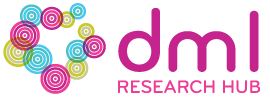ANN ARBOR, Mich. — November 10, 2011 – HASTAC’s fifth international conference, hosted this year by the University of Michigan in Ann Arbor, December 1-3, shows why and how we cannot change the academic message without transforming the medium. And vice versa. The conference on “Digital Scholarly Communication” practices what it preaches, experimenting with an array of new forms and formats designed not just to discuss those three terms–digital, scholarly, communication–but to show how they work together to change one another and, indeed, to contribute to the transformation of higher education more generally. Bringing together voices from many sectors of the academy in a variety of new formats, this conference presages powerful new possibilities for interdisciplinary, interactive, and multimedia research and communication both in the academy and for the general public.
Highlights:
“Digital Scholarly Communication” intersperses a range of keynotes across an array of academic and non-academic domains with sessions using innovative and interactive formats, packed with new ideas and methods. There are over a dozen roundtables concurrent with lightning talks (mini-lectures) and then combined Q and A sessions. There is time for idea jamming, workshopping, and other ways of meeting and interacting, as well as art, music, tours virtual and real, Paul Kaiser and the Openended Group digital art installations, and interactive experiences on every level.
Keynotes:
- Dan Atkins, Informatics scientist and inaugural director, NSF, Cyberinfrastructure Division, “Cyberinfrastructure”
- Dan Cohen, historian and Director of George Mason University’s Roy Rosenzweig Center for History and New Media, “Open Access and Crowdsourcing”
- Cathy N. Davidson, Professor of Interdisciplinary Studies, Duke University, and author of Now You See It, “Reclaiming the Information Age”
- Josh Greenberg, sociologist of knowledge and Program Director for Digital Information Technology, Sloan Foundation “Public Digital Display”
- James Leach, Chairman, National Endowment for the Humanities, “Digital Technologies in the Civilizing Project of the Global Humanities”
- Siva Vaidhyanathan, Robertson Professor of Media Studies, University of Virginia, “Googlization of Everything”
#Alt-Ac:
The Conference opens with an evening dedicated to #alt-ac: Alternative Academic Careers are alternatives to traditional tenure-track jobs in academe. The #alt-ac workshop will help participants create non-academic resumes based on proven and successful models that transform academic credentials into skills necessary and vital in the world beyond the university.
Event Information:
Date: Dec. 1-3, 2011
Time: Dec. 1, 2011 7:00 pm – Dec. 3, 2011 5:00 pm
Location: University of Michigan, North Quadrangle
Registration Deadline: Nov. 28, 2011
About HASTAC:
HASTAC (the Humanities, Arts, Science, and Technology Advanced Collaboratory) is an international network of educators and digital visionaries committed to the creative development and critical understanding of new technologies in life, learning, and society. HASTAC is committed to innovative design, participatory learning, and critical thinking.
Contacts:
Nancy K. Holliman
Director of Programs, HASTAC @ Duke
(919) 668-4129
nancy.holliman@duke.edu
Whitney Burke
Digital Media & Learning Research Hub
949-824-4587
wburke@hri.uci.edu

